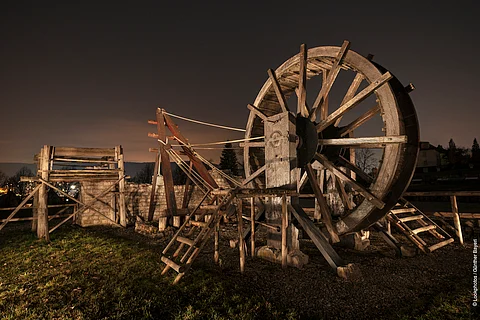
- Destinations
- Experiences
- Stay
- What's new
- Celebrating People
- Responsible Tourism
- CampaignsCampaigns
- SubscribeSubscribe
- Buy Now

The German Limes was a strong border that separated the Roman Empire from the lands of the Germanic tribes long ago. Built around 83 AD, it stretched over 550 kilometres across what is now Germany. It included walls, watchtowers, and forts, showing off the Romans' great building skills. The Limes protected Roman lands, controlled trade, and defended against attacks from the Germanic tribes. Over time, it became a place where Romans and local tribes shared ideas and cultures. Its importance is recognised today as a UNESCO World Heritage Site. Here's a look at the three massive frontiers that continue to symbolise a significant passage in the region's history:
The Danube Limes, part of the grand tapestry of Roman frontier towns known as 'limes,' extends across eight European countries, tracing the path of the Danube River. Encompassing regions in Austria, Germany, and Slovakia, the western segment of the Danube Limes was honoured as a UNESCO World Heritage Site in 2021. This recognition highlights its historical significance, encompassing vital elements ranging from roads and legionary fortresses to smaller forts and temporary camps. For instance, the Porta Praetoria in Regensburg, Bavaria, stands as a testament to this legacy, featuring an arched gateway constructed in 179 CE by Emperor Marcus Aurelius, serving as an entryway to the Castra Regina, a military stronghold overlooking the confluence of the Regen, Naab, and Danube Rivers.
The Upper Germanic-Rhaetian Limes, a monumental archaeological marvel stretching across a colossal 550 kilometres from the Rhine to the Danube, stands as a testament to ancient Roman boundaries. These ancient fortifications, comprising forts, watchtowers, and walls, were erected approximately two millennia ago to safeguard the vast Roman Empire from the threat of Barbarian incursions. Stretching from Bad Hönningen/Rheinbrohl on the Rhine to the Eining fort near Regensburg, the Limes traverses forests and pastoral landscapes, with significant highlights including the reconstructed Roman fort at Saalburg, the Roman museum in Osterburken, and the Limes museum in Aalen.
The ramparts and moats of the Upper Germanic Limes remain well-preserved, offering glimpses into Roman military engineering prowess. The Saalburg Fort, combined with the Rundweg Saalburg tour, provides an immersive journey into the world of the Romans, allowing visitors to explore the fort and the Taunus hills. While part of the Frontiers of the Roman Empire, the Upper Germanic-Rhaetian Limes is awe-inspiring in its own right.
The Lower German Limes, extending along the Rhine encompassing regions from Remagen to Xanten, form a vital historical corridor that gave rise to modern German towns like Bonn, Cologne, and Neuss. Spanning 400 kilometres, this section of the ancient border fortifications, recognised as a UNESCO World Heritage Site in 2021, preserves remnants of legionary camps, forts, harbours, aqueducts, and temples. Cities like Xanten, hosting the Archaeological Park, offer reconstructions of city walls, gates, Roman hostel, amphitheatre, and harbour temple, presenting visitors with a vivid glimpse into Roman architectural prowess and ancient craftsman's houses.
The German Limes, in its various segments and historical significance, emerges as a testament to the enduring legacy of the Roman Empire's strategic vision, cultural exchanges, and the intermingling of civilisations along its ancient borders.
This article is in collaboration with the German National Tourist Office, India. Explore the UNESCO World Heritage Sites in Germany here: https://www.germany.travel/en/campaign/world-heritage/home.html
